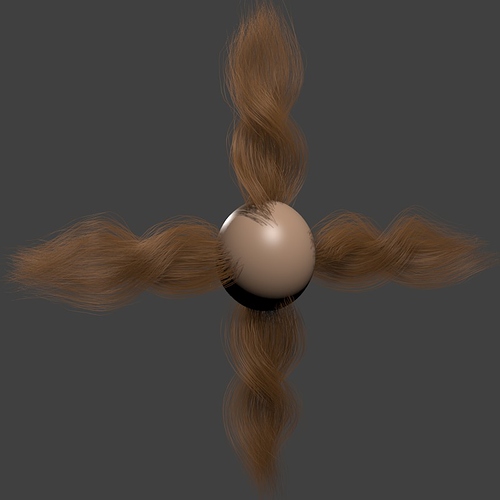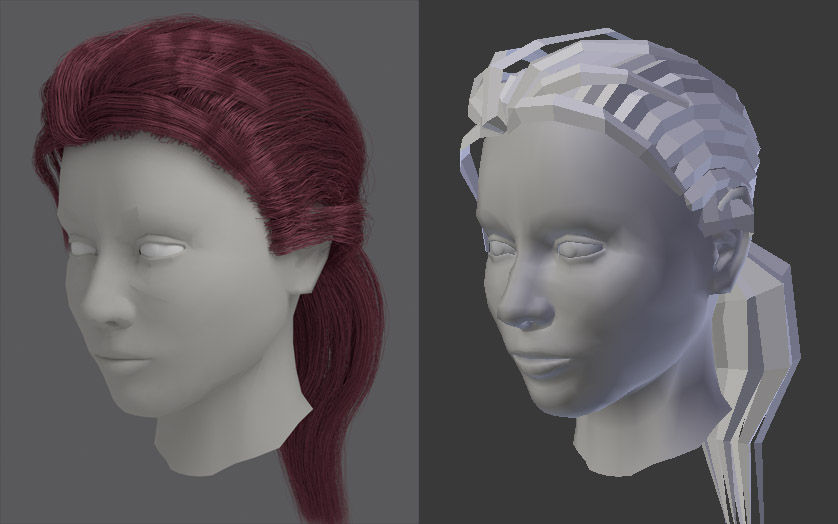I have written a script which can use the edge loops of a mesh object to create guide hairs of a hair system. The idea is that mesh modeling tools can be used to sculpt the general shape of a hair system more quickly than it can be done in particle mode. The hair mesh can also be a reusable starting-point or a backup of a hair system.
Its wiki page outlines some of its limitations and weaknesses so if you want to experiment with it head there. You’ll have to go to the tracker page (attachments tab) to download the plugin.
https://en.blender.org/index.php/Extensions:2.6/Py/Scripts/Objects/HairNet
http://projects.blender.org/tracker/index.php?func=detail&aid=35062&group_id=153&atid=467
The attached example blend file will, hopefully, demonstrate how to set things up for the plugin.
At this point it’s best to use the script in an experimental capacity. Part of its process requires that it delete existing particle systems, which seems tricky to manage via python. So I don’t recommend using it in a blend file where you’ve invested lots of time into particle systems.
Update Feb 8 2015 It’s been a long time since the last update. Version 0.4.9 introduces some workflow changes:
*Multiple hair proxy objects can be processed at once.
*Hair can be created on either a head-object or on the proxy mesh itself.
*There is a “Master Hair System” field which lets users copy hair settings from an existing hair system.
*Additional hairs can be generated in between mesh edges.
In some cases, the code creates extra named copies of hair settings (settings.001, settings.002 and so on). All the unused settings get cleared out upon saving and closing a blend file but the names get a bit messy.
The instructions on HairNet’s wiki page do not cover version 0.4.9 so users will have to do some experimenting until it gets updated.
Attachments
HairNetExample.blend (1.12 MB)




